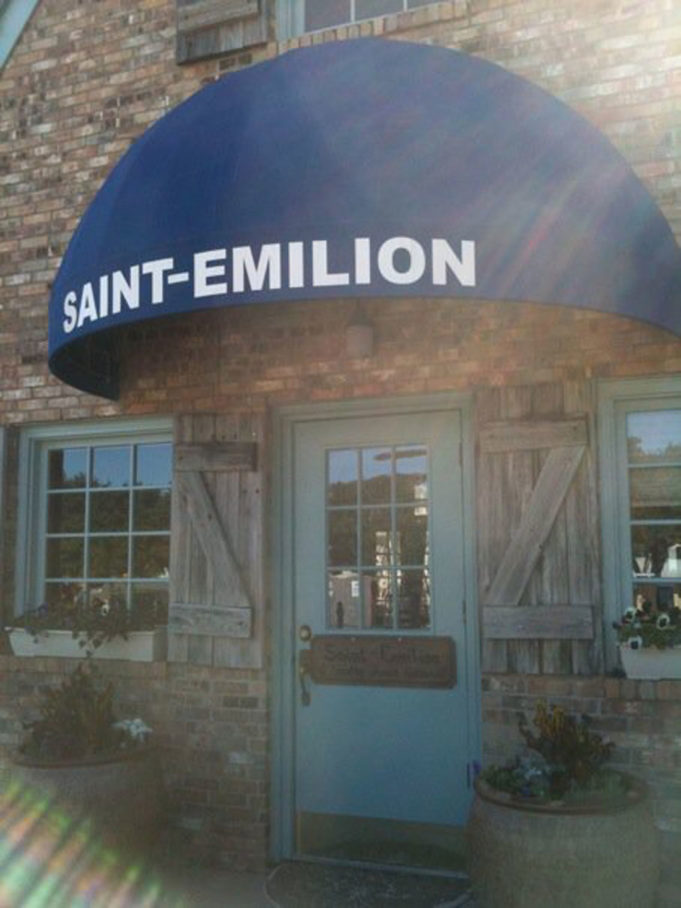The most confusing thing about the owners of Saint-Emilion Restaurant opening a fine-dining sister restaurant, Paris 7th, is the fact that the long-standing traditional French stalwart decided to change its upscale concept to “Country French Bistro” and move its pricier offerings to the new space. Why wouldn’t the owners just leave well enough alone? Why not take their admittedly fantastic concept of lower-priced (by their standards) dishes and wine to the new location, which occupies the space that once housed Le Cep and Four Star Coffee on West 7th Street in Monticello?
I guess the powers that be know what they’re doing, but to those of us on the outside it looks like they’re changing a winning formula, and that’s risky. Over the last several decades, Saint-Emilion has appeared recession-proof. Since the Reagan administration, the eatery’s quaint A-frame space tucked away on the neighborhood end of West 7th has been a beacon for the Westside elite, anyone celebrating a special occasion, and the rest of us who appreciate slavishly traditional French cuisine done well – and don’t mind spending half a paycheck for a memorable night out.
Some of the Saint’s staples are served at both locales, but a few of the sticker-shocking, Robin Leach-y offerings have all migrated to the new space. Besides that distinction, the difference between the two eateries seems mostly cosmetic and, frankly, negligible. If I had to sum it up, I’d point to the filet mignon tartare on offer at Paris 7th versus the regular ol’ tenderloin tartare at Saint-Emilion. We’re not talking about drastically distinctive concepts here.
If there was ever an air of pretension in the charming, if cramped, dining room of Saint-Emilion (as the bridge-and-tunnel crowd has complained in the past), I certainly didn’t feel it on my recent weekday visit. The dining room was packed and way too bright, and a general mood of revelry filled the air. Service was slow but sincere, which made for a forgivably languid experience. Everyone who approached our table was kind, professional, and knowledgeable.
After ordering champagne from the drinks-only server (another person takes your food order), my guest and I started with the classic country French app egg mayo ($3.25) from the amuse-bouches section of the menu. The hard-boiled eggs were slathered in house mayonnaise and a Tetris-column-shaped arrangement of veggies. That was a new touch.
Then, against my better judgment, the sentimental part of my brain took over and made me order some of my favorites from the old menu: the pâté de campagne ($8.25), a smooth terrine of God-knows-what-animals served alongside Dijon mustard and cornichons (pickles); and the aforementioned steak tartare ($9.25), raw tenderloin accompanied by housemade chips and more mustard and topped with a raw egg. Both were elegant, refined examples of classic French cuisine.
One notable change I spotted was in the menu, whose language has become super-casual and offers advice. For example, in the description of the buttery-smooth filet de buef with sauce au deux poiveres ($32.25) was the suggestion, “Find a good cabernet and you’re all set.” I imagined the maître d’ donning a backwards ball-cap while sitting backwards in a chair saying that in his thick French accent. Just as “relatable” was the knee-slapper embedded in the description of the duck ($38.25) that quipped, “Enough for two but you might want it just for yourself.” I didn’t need help devouring every bit of the half-bird roasted in a wood-fire oven and coated with cassis sauce – the same way I did the first time I ever dined in that space back when I was in junior high.
Since we were determined to order only blasts from our pasts, my guest and I had to make the trip over to Paris 7th for dessert to enjoy the iles floatant, which is now served as a half-portion – a co-star of the dessert crème brûlée oeufs en neige. Bloated, a little drunk, and completely satisfied, we vowed to one day try again to make important distinctions between the two sisters – unless, of course, we’re once again overcome with nostalgia and visit both places just to enjoy everything we remember from the Saint-Emilion of our past












